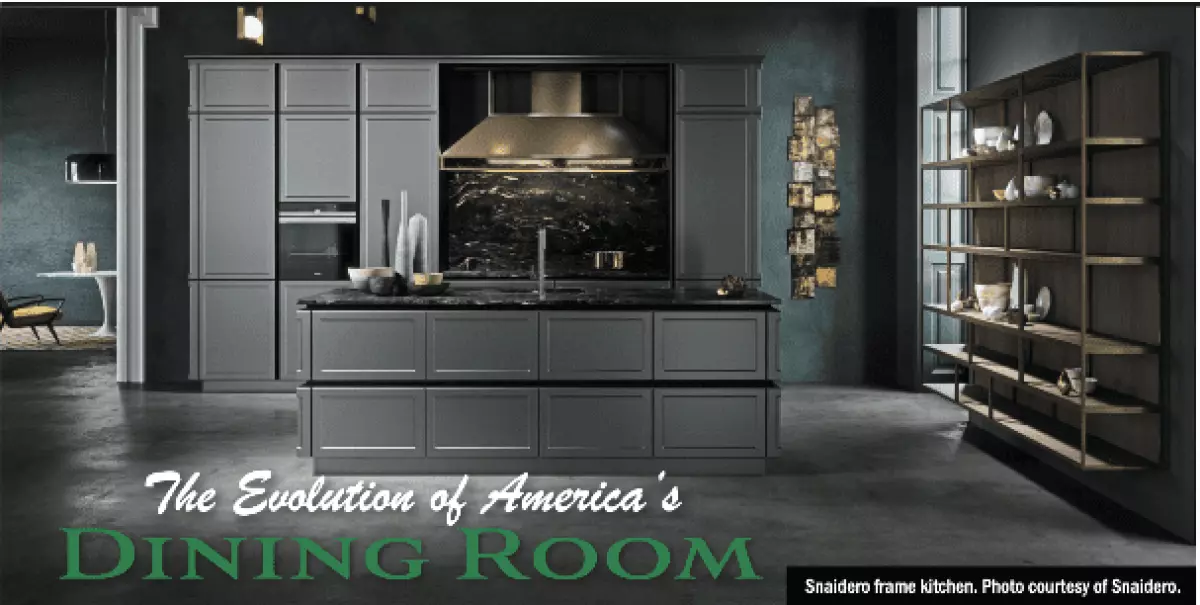
Our homes are a reflection of our lives, constantly adapting to new trends and circumstances. One area that has seen a remarkable transformation is the dining room. In this article, we will delve into the intriguing history of America's dining rooms and explore how they have evolved over the years.
The Birth of Functionality
Before the 18th century, assigned functions for specific rooms were virtually nonexistent in the American colonies. The concept of a dedicated dining room had yet to take root, and families would often eat in the "hall" where meals were cooked and served. This space, dominated by the warm glow of a fireplace and filled with the hustle and bustle of daily life, lacked the comforts we associate with a traditional dining room.
The Rise of the Dining Room
As families prospered and acquired more possessions, the "keeping room" or kitchen moved to a separate building, making way for the emergence of the modern dining room. In 1772, Thomas Jefferson's Monticello became one of the first American homes to feature a room specifically designed for dining. This concept quickly spread across the country, with the middle class embracing the notion of a designated space for communal dining and entertainment.
Changing Locations and Styles
In the early days, dining rooms were typically located at the rear of the house or in conjunction with the front parlor. It wasn't until 1821 that the dining room claimed a prominent position at the front of the house. As architecture evolved, basements were transformed into kitchens, allowing the front door to open directly to a dining room or other social spaces.
The Victorian Era's Dining Rituals
During the Victorian era, dining became an intricate performance of social status. Elaborate dinner parties were elevated to an art form, where every detail of serving and dining was meticulously observed. Wealth and opulence were on display, with massive dining tables, fine art, and ornate decorations adorning the room. The Victorian dining room was a symbol of affluence and a mark of one's place in society.
Embracing Modernity
With the changing dynamics of the world, the dining room shifted its focus. The extravagant styles of the Victorians made way for more practical and streamlined designs. The Arts and Crafts, Art Nouveau, and Art Deco movements each brought their unique interpretation of the dining room. These styles emphasized clean lines, modern aesthetics, and functional simplicity.
A New Perspective
In the aftermath of World War II, the dining room took on a new meaning. It symbolized the importance of a harmonious nuclear family, with Norman Rockwell's iconic paintings capturing the idealistic vision of family togetherness. However, as the 1990s arrived, the concept of the "great room" and open-plan living became popular. Formal dining rooms fell out of favor, often becoming neglected spaces filled with unread mail.
A Reimagined Space
The recent pandemic has brought about a renewed appreciation for the dining room. As homes became offices and classrooms during lockdowns, families rediscovered the versatility of this space. No longer confined to formal gatherings, the dining room found new life as a multi-purpose area – a game room, a library, or simply a place for everyday dining.
The Ever-Evolving Dining Room
The beauty of today's dining room lies in its flexibility. Whether it embraces its traditional role or transforms into a multi-use space, the dining room is no longer a museum of formality. It adapts to the needs and desires of those who inhabit it, reflecting the changing dynamics of our modern lives.
While the dining room's evolution has been influenced by historical events and shifting societal norms, it continues to be a crucial part of our homes. Its story is a testament to our constant quest for comfort, functionality, and meaningful connections.
Michelle Galler is a realtor with Chatel Real Estate, representing buyers and sellers in Rappahannock County, Virginia, and Washington, D.C. She is also an antiques dealer and columnist.

















